Title Page
Copyright
Foreword
Table of Contents
Preface
Intended Audience of this Book
About the Authors
Acknowledgments
Part I: Introduction to General and Automotive Networking
Chapter 1: The Motivation for Automotive Ethernet: Advantages and Opportunities
1.1 Introduction
1.2 Two Worlds Collide
1.3 Automotive Electronics - A Market for Growth
1.4 Ethernet - An Ocean of Possibilities
1.5 Increasing Bandwidth and Future-Proof Technology
1.6 Full-Duplex, Packet-Switched, Address-Based Networking
1.6.1 Full-Duplex Operation
1.6.2 Packet Switching
1.6.3 Address-Based Messaging
1.7 Electrical Isolation
1.8 Power over Ethernet (PoE) and Power over Data Lines (PoDL)
1.9 High Speed and Low Weight
1.10 Product Differentiation - It’s No Longer About Nuts and Bolts
1.11 Wireless Functionality
1.12 Summary
Chapter 2: Overview, Background and Business Requirements of Automotive Networking
2.1 Introduction
2.2 A Brief History of Automotive Networking
2.2.1 The First Serial Communications
2.2.2 Real-Time Networks
2.2.3 Establishing CAN as an Industry Standard
2.2.4 Beyond CAN
2.2.5 The Dawn of Automotive Ethernet
2.3 Safety
2.3.1 The Double Edged Sword of Automotive Electronics
2.3.2 ISO 26262 - Road Vehicle Safety Standard for Electrical and Electronic Systems
2.3.3 Automotive Safety Integrity Level (ASIL)
2.3.4 Achieving Functional Safety
2.4 Component Availability
2.4.1 Contrasting the Average Lifespan of Consumer Electronics and Vehicles
2.4.2 The Development Cycle of Consumer Electronics Compared to Automobiles
2.4.3 Summary of Important Factors for Component Availability
2.5 Cost Considerations
2.5.1 Electronics Content in a Modern Vehicle
2.5.2 Profit Margins for Automotive Manufacturers
2.5.3 Changing Times Mean New Cost Equations in the Networking World
Chapter 3: Electrical Requirements for Automotive Electronics
3.1 Power Supply / Voltages
3.1.1 Reverse Polarity
3.1.2 Cold Cranking Voltage
3.1.3 Load Dump
3.1.5 Parked State Power Consumption (Parasitic Current Draw)
3.1.4 Power Management
3.1.6 Power Connections to an ECU
3.1.7 Automotive Transceivers
3.1.8 Typical System Sleep / Standby Modes
3.1.9 Wakeup / Boot Time
3.1.10 Virtual Networking
3.1.11 Partial Networking
3.2 Electromagnetic Compatibility
3.2.1 Emissions Testing
3.2.2 Immunity (Susceptibility) Testing
Chapter 4: Environmental and Mechanical Requirements for Automotive Electronics
4.1 Environmental Concerns
4.1.1 Constant Temperature Conditions
4.1.2 Temperature Fluctuations and Temperature Step Testing
4.1.3 Temperature Cycling
4.1.4 Ice Water Shock Testing
4.1.5 Salt Spray
4.1.6 Cyclic Humid Heat
4.1.7 Dust
4.2 Mechanical Loads / Vibrations
4.2.1 Thermal Impact of Mechanical Loads
4.2.2 Free Fall / Drop Test
4.2.3 Vehicle Body / Sprung Masses
4.2.4 Wheels, Suspension / Unsprung Masses
4.2.5 Doors, Hood and Trunk
4.2.6 Engine
4.2.7 Transmission or Gearbox
4.2.8 Flexible Plenum Chamber
Chapter 5: Networking Fundamentals
5.1 Introduction
5.2 Fundamental Network Characteristics
5.2.1 Networking Layers, Models and Architectures
5.2.2 Protocols: What Are They, Anyway?
5.2.3 Circuit Switching and Packet Switching Networks
5.2.4 Connection-Oriented and Connectionless Protocols
5.2.5 Messages: Packets, Frames, Datagrams and More
5.2.6 Message Formatting: Headers, Payloads and Footers
5.2.7 Message Addressing and Transmission Methods: Unicast, Broadcast and Multicast Messages
5.2.8 Network Topologies
5.2.9 Network Operational Models and Roles: Peer-to-Peer, Client/Server and Master/Slave Networking
5.3 Types and Sizes of Networks
5.3.1 Local Area Networks (LANs), Wireless LANs (WLANs), Wide Area Networks (WANs) and Variants
5.3.2 Network Size Terminology: Segments, Clusters, Networks, Subnetworks and Internetworks
5.3.3 The Internet, Intranets and Extranets
5.4 Network Performance Issues and Concepts
5.4.1 Putting Network Performance In Perspective
5.4.2 Balancing Network Performance with Key Non-Performance Characteristics
5.4.3 Understanding Performance Measurement Terms and Units
5.4.4 Performance Dimensions: Speed, Bandwidth, Throughput and Latency
5.4.5 Theoretical and Real-World Throughput, and Factors Affecting Network Performance
5.4.6 Simplex, Half-Duplex and Full-Duplex Communication
5.4.7 Quality of Service (QoS)
Chapter 6: Automotive Ethernet Related Standards Organizations and Associations
6.1 Introduction
6.2 Making Sense of Standards Organizations and Associations
6.3 International Standards Organizations
6.3.1 International Organization for Standardization (ISO)
6.3.2 International Electrotechnical Commission (IEC)
6.3.3 Institute for Electronics and Electrical Engineers (IEEE)
6.3.4 Internet Engineering Task Force (IETF)
6.3.5 SAE International
6.4 Industry Consortiums and Associations
6.4.1 One-Pair EtherNet (OPEN) Alliance Special Interest Group (SIG)
6.4.2 AVnu Alliance
6.4.3 Association for Standardization of Automation and Measuring Systems (ASAM)
6.4.4 AUTOSAR
Chapter 7: The Open System Interconnection (OSI) Reference Model
7.1 Introduction
7.2 History of the OSI Reference Model
7.3 General Reference Model Issues
7.3.1 The Benefits of Networking Models
7.3.2 Why Understanding The OSI Reference Model Is Important To You
7.3.3 The OSI Reference Model in the “Real World”
7.3.4 The OSI Reference Model and Other Networking Models, Protocol Suites and Architectures
7.4 Key OSI Reference Model Concepts
7.4.1 OSI Reference Model Networking Layers, Sublayers and Layer Groupings
7.4.2 “N” Notation and Other OSI Model Layer Terminology
7.4.3 Interfaces: Vertical (Adjacent Layer) Communication
7.4.4 Protocols: Horizontal (Corresponding Layer) Communication
7.4.5 Data Encapsulation, Protocol Data Units (PDUs) and Service Data Units (SDUs)
7.4.6 Indirect Device Connection and Message Routing
7.5 OSI Reference Model Layers
7.5.1 Physical Layer (Layer 1)
7.5.2 Data Link Layer (Layer 2)
7.5.3 Network Layer (Layer 3)
7.5.4 Transport Layer (Layer 4)
7.5.5 Session Layer (Layer 5)
7.5.6 Presentation Layer (Layer 6)
7.5.7 Application Layer (Layer 7)
7.6 OSI Reference Model Layer Summary
Chapter 8: Comparing Traditional Automotive Networks to Ethernet
8.1 Introduction
8.2 Ethernet
8.2.1 Background
8.2.2 Physical Layer
8.2.3 Topology
8.2.4 Frame Format
8.2.5 Media Access Control
8.2.6 Advantages
8.2.7 Disadvantages
8.3 Controller Area Network (CAN) and CAN with Flexible Data Rate (CAN-FD)
8.3.1 Background
8.3.2 Physical Layer
8.3.3 Topology
8.3.4 Messaging / Frame Format
8.3.5 Media Access Control
8.3.6 A Note on CAN-FD
8.3.7 Advantages
8.3.8 Disadvantages
8.4 FlexRay
8.4.1 Background
8.4.2 Topology
8.4.4 Media Access Control
8.4.3 Messaging / Frame Format
8.4.5 Advantages
8.4.6 Disadvantages
8.5 Media Oriented Serial Transport (MOST)
8.5.1 Background
8.5.2 Physical Layer(s)
8.5.3 Topology
8.5.4 Messaging / Frame Format
8.5.5 Media Access Control
8.5.6 Advantages
8.5.7 Disadvantages
8.6 Local Interconnect Network (LIN)
8.6.1 Background
8.6.2 Physical Layer
8.6.3 Topology
8.6.4 Messaging / Frame Format
8.6.5 Media Access Control
8.6.6 Advantages
8.6.7 Disadvantages
8.7 Summary Comparison of Automotive Network Technologies
Part II: An Overview of Ethernet Architecture, Operation and Hardware
Chapter 9: Overview of IEEE Project 802 and Ethernet (IEEE 802.3)
9.1 A Short History of Ethernet
9.2 IEEE Project 802 Structure, Networking Model, Standards and Working Groups
9.2.1 History and Evolution of IEEE Project 802
9.2.2 Structure of the IEEE 802 LAN/MAN Standards Committee (LMSC)
9.2.3 Overview of the IEEE Project 802 Standards Development Process
9.2.4 The IEEE Project 802 Networking Model and Extensions to the OSI Reference Model
9.2.5 Summary of IEEE 802 Working Groups
9.3 IEEE 802.1 - Project 802 Architecture, Management, Internetworking, and Higher Layer Interfaces
9.3.1 Working Group Mission, Responsibilities and Task Groups
9.3.2 IEEE 802.1 Standard Naming Conventions
9.3.3 Major IEEE 802.1 Standards
9.4 IEEE 802.2 - Logical Link Control (LLC)
9.4.1 IEEE 802.2 Overview and Role - Theory and Practice
9.4.2 IEEE 802.2 Logical Link Control Service Types
9.4.3 IEEE 802.2 Link Service Access Points (SAPs)
9.4.4 IEEE 802.2 Logical Link Control Subheader and Source and Destination SAPs (SSAPs and DSAPs)
9.4.5 IEEE 802.2 Subnetwork Access Protocol (SNAP) and SNAP Subheaders
9.5 IEEE 802.3 - Ethernet Overview
9.5.1 Ethernet Standards and Architecture
9.5.1.1 Early (Pre-IEEE) Ethernet Specifications
9.5.1.2 IEEE 802.3 Ethernet Standards
9.5.1.4 The Ethernet MAC-PHY Interface - Media Independent Interfaces (MIIs) and the Reconciliation Sublayer (RS)
9.5.1.3 Overall IEEE 802.3 (Ethernet) Architecture
9.5.2 Overview of the Elements of an Ethernet Network
9.5.2.1 Network Devices (End Devices, Hosts)
9.5.2.2 Media (Cable) Types and Connection Topologies
9.5.2.3 Network Interconnection Devices
9.5.2.4 Physical Layer Encoding and Signaling Methods
9.5.2.5 Media Access Control (MAC) Methods
9.5.2.6 Ethernet Frames (Messages)
9.5.3 Ethernet Speed Families
9.5.3.1 Regular Ethernet (10 Mb/s) and Low-Speed Ethernet (1 Mb/s)
9.5.3.2 Fast Ethernet (100 Mb/s)
9.5.3.3 Gigabit Ethernet (1 Gb/s)
9.5.3.4 Faster Ethernet Speeds (10-Gigabit, 40-Gigabit, 100-Gigabit and 400-Gigabit Ethernet)
9.5.4 Overview of Ethernet Performance-Enhancing and Special Features
9.5.4.1 Switched (Contentionless) Ethernet
9.5.4.2 Full-Duplex Transmissions
9.5.4.3 Multiple Speed Networks and Auto-Negotiation
9.5.4.4 Jumbo Frames
9.5.4.5 Link Aggregation
9.5.4.6 Virtual LANs
9.5.4.7 Power over Ethernet (PoE)
9.5.4.8 Energy-Efficient Ethernet (EEE)
Chapter 10: Ethernet (IEEE 802.3) Physical Layer — Encoding, Signaling and Cabling Specifications
10.1 Ethernet Physical Layer Notation
10.2 Physical Layer Architecture of Fast (100 Mb/s) Ethernet and Gigabit (1 Gb/s) Ethernet
10.2.1 Overall Fast Ethernet and Gigabit Ethernet Physical Layer Architecture
10.2.2 Ethernet Physical Coding Sublayer (PCS)
10.2.3 Ethernet Physical Medium Attachment (PMA) Sublayer
10.2.4 Physical Medium Dependent (PMD) Sublayer
10.2.5 Medium Dependent Interface (MDI) and Physical Medium
10.3 General Ethernet Physical Layer Issues, Responsibilities and Features
10.3.1 The Physical Layer “Trade-off Triangle” - Cable Length, Transmission Speed and Implementation Cost
10.3.2 Factors Affecting Cable Length
10.3.3 High-Level Encoding and Processing - Block Coding and Scrambling
10.3.4 Low-Level Line Coding and Digital Signal Processing
10.3.5 Auto-Negotiation
10.4 Overview of Fast (100 Mb/s) Ethernet and Gigabit (1 Gb/s) Ethernet Physical Layers
10.4.1 Summary of Regular (10 Mb/s) Ethernet Physical Layer Interfaces (10BASE5, 10BASE2, 10BASE-T, FOIRL, 10BASE-F)
10.4.2 Fast Ethernet Physical Layer Interfaces (100BASE-FX, 100BASE-TX, 100BASE-T4, 100BASE-T2)
10.4.3 Gigabit Ethernet Physical Layer Interfaces (1000BASE-SX, 1000BASE-LX, 1000BASE-CX, 1000BASE-T)
10.5 BroadR-Reach / OABR / One Twisted Pair 100 Mb/s Ethernet (1TPCE) Physical Layer / IEEE P802.3bw (100BASE-T1)
10.5.1 Design Goals of BroadR-Reach
10.5.2 BroadR-Reach Physical Layer Architecture and Relationship to 1000BASE-T Gigabit Ethernet
10.5.3 General Characteristics - Topology, Throughput and Media Access Control Method
10.5.4 Physical Coding Sublayer (BR-PCS) Operation and High-Level Encoding Methods
10.5.5 Physical Medium Attachment Sublayer (BR-PMA) Operation and Low-Level Coding and Signaling Methods
10.5.6 Cable and Connectors
10.5.7 IEEE Standardization Process
10.6 Reduced Twisted Pair Gigabit Ethernet (RTPGE) / IEEE P802.3bp (1000BASE-T1)
Chapter 11: Ethernet (IEEE 802.3) Media Access Control (MAC) Sublayer: Addressing, Transmission Methods, Frame Formats and Special Features
11.1 Ethernet Media Access Control (MAC) Addresses
11.1.1 MAC Addressing Overview
11.1.2 Universally Administered MAC Addresses
11.1.3 Locally Administered Addresses
11.1.4 Broadcast, Group and Virtual MAC Addresses
11.1.5 Canonical and Non-Canonical MAC Address Formats
11.2 Overview of the Traditional Shared Medium Ethernet Media Access Control (MAC) Method
11.2.1 The Carrier Sense Multiple Access with Collision Detection (CSMA/CD) Mechanism
11.2.2 CSMA/CD Collisions, Collision Handling and Jam Patterns
11.2.3 Ethernet Slot Time and Its Impact on Ethernet Characteristics
11.2.4 Ethernet Collision Resolution: Backing Off and the Truncated Binary Exponential Backoff (TBEB) Algorithm
11.2.5 Gigabit Ethernet Media Access Control Changes: Carrier Extension and Frame Bursting
11.3 Dedicated (Contentionless, Switched) and Full-Duplex Ethernet
11.3.1 Problems and Limitations with Half-Duplex Ethernet and CSMA/CD
11.3.2 Dedicated (Contentionless) Ethernet: The Basics of Switched, Collision-Free Operation
11.3.3 Full-Duplex Ethernet
11.4 Standard Ethernet Frame and Packet Formats and Transmission Delimiters
11.4.1 The Preamble, Start Frame Delimiter and Interframe Gap
11.4.2 Overview of Ethernet Frames and Packets
11.4.3 The History Behind Ethernet’s Different Standard Frame Formats
11.4.4 DIX Ethernet (Ethernet II) Frame Format and Ethertypes
11.4.5 IEEE 802.3+802.2 Ethernet Frame Format
11.4.6 IEEE 802.3+802.2+SNAP Ethernet Frame Format
11.5 Special Ethernet Features and Frame Formats
11.5.1 Ethernet Flow Control, MAC Control Frames and Pause Frames
11.5.2 Ethernet Virtual LANs (VLANs), Frame Priority and Ethernet Frame Tagging
11.5.3 Ethernet Frame Size Extension (Jumbo Frames)
Chapter 12: Ethernet Hardware: Media (Cables and Connectors), Controllers, Hosts and Interconnection Devices (Including Bridges and Switches)
12.1 Ethernet Media - Cables and Connectors
12.1.1 Overview of Cable Performance and Quality Characteristics and Ratings
12.1.1.1 Bandwidth, Frequency and Data Carrying Capacity
12.1.1.2 Power, Attenuation and Insertion Loss
12.1.1.3 Impedance, Characteristic Impedance and Bus Termination
12.1.1.4 Impedance Matching and Return Loss
12.1.1.5 Interference, Noise, and Signal-to-Noise Ratio (SNR)
12.1.1.6 Crosstalk (NEXT, PS NEXT, FEXT, ELFEXT and PS ELFEXT)
12.1.1.7 Alien Crosstalk
12.1.1.8 Attenuation to Crosstalk Ratio (ACR)
12.1.1.9 Nominal Velocity of Propagation (NVP) and Cable Length Measurement
12.1.1.10 Propagation Delay and Delay Skew
12.1.2 Construction and Operation of Twisted Pair (TP) Media
12.1.2.1 The Powerful Concept Behind Twisted Pair Media: Balanced / Differential Signaling
12.1.2.2 Comparing Twisted Pair Cables to Other Networking Media
12.1.2.3 Characteristics of Twisted Pairs - Conductor Material and Type, Pair Twist Rate, Insulation and Pair Shielding
12.1.2.4 Characteristics of Standard (Four-Pair) Twisted Pair Cables: Cable Jacket Materials, Shielding, Internal Structures and Overall Construction
12.1.2.5 Categorization and Naming of Twisted Pair Cable Based on Shielding
12.1.2.6 Shielding Drawbacks and the Evolution of Twisted Pair Cable in the Networking Industry
12.1.2.7 Overview of TIA/EIA 568 Cable Categories and ISO/IEC 11801 Classes for Twisted Pair Cable
12.1.2.8 Standard Twisted Pair Ethernet 8P8C (RJ-45) Connectors
12.1.2.9 Twisted Pair Cable in Automotive Ethernet Applications
12.1.2.10 Twisted Pair Connectors in Automotive Ethernet Applications
12.1.3 A Brief Summary of Other Media Types
12.1.3.1 Coaxial (Coax) Cable
12.1.3.2 Twinaxial (Twinax) Cable
12.1.3.3 Fiber Optic Cable
12.2 Ethernet Controllers and Hosts
12.2.1 Ethernet Controllers
12.2.2 Ethernet Hosts
12.2.3 Ethernet Interfaces and Multihoming
12.3 Ethernet Interconnection Devices (Including Ethernet Switches)
12.3.1 Overview and General Characteristics of Ethernet Interconnection Devices
12.3.1.1 Role and Function of Interconnection Devices in Ethernet Networks
12.3.1.2 Criteria Differentiating Ethernet Interconnection Devices
12.3.1.3 Collision Domain Segmentation Using Ethernet Interconnection Devices
12.3.1.4 Broadcast Domain Segmentation Using Ethernet Interconnection Devices
12.3.2 Fundamental Ethernet Interconnection Devices
12.3.2.1 Repeaters
12.3.2.2 Hubs
12.3.2.3 Bridges
12.3.2.4 Switches
12.3.2.5 Routers
12.3.2.6 Interconnection Device Summary Comparison
12.3.3 Operation and Features of Ethernet Switches
12.3.3.1 Overview of Standard “Transparent” Switch Operation - Address-Based Frame Forwarding
12.3.3.2 The Switch Learning Process
12.3.3.3 Switch Table Updates and Entry Aging
12.3.3.4 Store-and-Forward Versus Cut-Through Switching
12.3.3.5 Buffering, Simultaneous Transfers, and Switching Capacity
12.3.3.6 Switch Expansion, Feature Support, and Management
12.3.3.7 Switch Traffic Monitoring Issues and Solutions
12.3.3.8 Higher-Layer and Multilayer Switching
Part III: TCP/IP Network Layer (OSI Layer 3) Protocols
Chapter 13: Overview of the TCP/IP Protocol Suite and Architecture
13.1 Introduction
13.2 TCP/IP Overview and History
13.3 TCP/IP Services and Client/Server Operation
13.4 TCP/IP Architecture and the TCP/IP (DARPA/DOD) Model
13.5 Summary of Key TCP/IP Protocols
Chapter 14: Address Resolution and the TCP/IP Address Resolution Protocol (ARP)
14.1 Introduction
14.2 Address Resolution Concepts and Issues
14.2.1 The Need For Address Resolution
14.2.2 Address Resolution Through Direct Mapping
14.2.3 Dynamic Address Resolution
14.2.4 Dynamic Address Resolution Caching and Efficiency Issues
14.3 TCP/IP Address Resolution Protocol (ARP)
14.3.1 ARP Overview, Standards and History
14.3.2 ARP Address Specification and General Operation
14.3.3 ARP Message Format
14.3.4 ARP Caching
14.3.5 Proxy ARP
14.4 TCP/IP Address Resolution For IP Multicast Addresses
14.5 TCP/IP Address Resolution For IP Version 6
Chapter 15: Introduction to the Internet Protocol (IP)
15.1 Introduction
15.2 IP Overview and Key Operational Characteristics
15.3 IP Functions
15.4 IP History, Standards, Versions and Closely-Related Protocols
Chapter 16: IP Addressing
16.1 Introduction
16.2 IP Addressing Concepts and Issues
16.2.1 IP Addressing Overview and Fundamentals
16.2.2 IP Address Size, Address Space and “Dotted Decimal” Notation
16.2.3 IP Basic Address Structure and Main Components: Network ID and Host ID
16.2.4 IP Addressing Categories (Classful, Subnetted and Classless) and IP Address Adjuncts (Subnet Mask and Default Gateway)
16.2.5 Number of IP Addresses and Multihoming
16.2.6 IP Address Management and Assignment Methods and Authorities
16.3 IP “Classful” (Conventional) Addressing
16.3.1 IP “Classful” Addressing Overview and Address Classes
16.3.2 IP “Classful” Addressing Network and Host Identification and Address Ranges
16.3.3 IP Address Class A, B and C Network and Host Capacities
16.3.4 IP Addresses With Special Meanings
16.3.5 IP Reserved, Loopback and Private Addresses
16.3.6 IP Multicast Addressing
16.3.7 Problems With “Classful” IP Addressing
16.4 IP Subnet Addressing (“Subnetting”) Concepts
16.4.1 IP Subnet Addressing Overview, Motivation, and Advantages
16.4.2 IP Subnetting: “Three-Level” Hierarchical IP Subnet Addressing
16.4.3 IP Subnet Masks, Notation and Subnet Calculations
16.4.4 IP Default Subnet Masks For Address Classes A, B and C
16.4.5 IP Custom Subnet Masks
16.4.6 IP Variable Length Subnet Masking (VLSM)
16.5 IP Classless Addressing: Classless Inter-Domain Routing (CIDR) / “Supernetting”
16.5.1 IP Classless Addressing and “Supernetting” Overview, Motivation, Advantages and Disadvantages
16.5.2 IP “Supernetting”: Classless Inter-Domain Routing (CIDR) Hierarchical Addressing and Notation
16.5.3 IP Classless Addressing Block Sizes and “Classful” Network Equivalents
16.5.4 IP CIDR Addressing Example
Chapter 17: IP Datagram Encapsulation and Formatting
17.1 Introduction
17.2 IP Datagram Encapsulation
17.3 IP Datagram General Format
17.4 IP Datagram Options and Option Format
Chapter 18: IP Datagram Size, Maximum Transmission Unit (MTU), Fragmentation and Reassembly
18.1 Introduction
18.2 IP Datagram Size, the Maximum Transmission Unit (MTU), and Fragmentation Overview
18.3 IP Message Fragmentation Process
18.4 IP Message Reassembly Process
Chapter 19: IP Datagram Delivery, Routing and Multicasting
19.1 Introduction
19.2 IP Datagram Direct Delivery and Indirect Delivery (Routing)
19.3 IP Routing Concepts and the Process of Next Hop Routing
19.4 IP Routes and Routing Tables
19.5 IP Routing In A Subnet Or Classless Addressing (CIDR) Environment
19.6 IP Multicasting
Chapter 20: Overview of Internet Protocol Version 6 (IPv6)
20.1 Introduction
20.2 IPv6 Motivation and General Description
20.3 Major Changes And Additions In IPv6
20.4 Transition from IPv4 to IPv6
Chapter 21: IPv6 Addressing
21.1 Introduction
21.2 IPv6 Addressing Overview: Addressing Model and Address Types
21.3 IPv6 Address Size and Address Space
21.4 IPv6 Address and Address Notation and Prefix Representation
21.5 IPv6 Address Space Allocation
21.6 IPv6 Global Unicast Address Format
21.7 IPv6 Interface Identifiers and Physical Address Mapping
21.8 IPv6 Special Addresses: Reserved, Private (Link-Local / Site-Local), Unspecified and Loopback
21.9 IPv6/IPv4 Address Embedding
21.10 IPv6 Multicast and Anycast Addressing
21.11 IPv6 Autoconfiguration and Renumbering
Chapter 22: IPv6 Datagram Encapsulation, Size, Fragmentation and Routing
22.1 Introduction
22.2 IPv6 Datagram Overview and General Structure
22.3 IPv6 Datagram Main Header Format
22.4 IPv6 Datagram Extension Headers
22.5 IPv6 Datagram Options
22.6 IPv6 Datagram Size, Maximum Transmission Unit (MTU), Fragmentation and Reassembly
22.7 IPv6 Datagram Delivery and Routing
Chapter 23: IP Network Address Translation (NAT) Protocol
23.1 Introduction
23.2 IP NAT Overview, Motivation, Advantages and Disadvantages
23.3 IP NAT Address Terminology
23.4 IP NAT Static and Dynamic Address Mappings
23.5 IP NAT Unidirectional (Traditional/Outbound) Operation
23.6 IP NAT Bidirectional (Two-Way/Inbound) Operation
23.7 IP NAT Port-Based (“Overloaded”) Operation: Network Address Port Translation (NAPT) / Port Address Translation (PAT)
23.8 IP NAT “Overlapping” / “Twice NAT” Operation
23.9 IP NAT Compatibility Issues and Special Handling Requirements
Chapter 24: Internet Control Message Protocol (ICMP/ICMPv4 and ICMPv6)
24.1 Introduction
24.2 ICMP Concepts and General Operation
24.2.1 ICMP Overview, History, Versions and Standards
24.2.2 ICMP General Operation
24.2.3 ICMP Message Classes, Types and Codes
24.2.4 ICMP Message Creation and Processing Conventions and Rules
24.2.5 ICMP Common Message Format and Data Encapsulation
24.3 ICMP Message Types and Formats
24.3.1 ICMP Version 4 (ICMPv4) Error Message Types and Formats
24.3.2 ICMP Version 4 (ICMPv4) Informational Message Types and Formats
24.3.3 ICMP Version 6 (ICMPv6) Error Message Types and Formats
24.3.4 ICMP Version 6 (ICMPv6) Informational Message Types and Formats
Chapter 25: TCP/IP IPv6 Neighbor Discovery Protocol (ND)
25.1 Introduction
25.2 IPv6 ND Overview, History, Motivation and Standards
25.3 IPv6 ND General Operational Overview: ND Functions, Functional Groups and Message Types
25.4 IPv6 ND Functions Compared to Equivalent IPv4 Functions
25.5 IPv6 ND Host-Router Discovery Functions: Router Discovery, Prefix Discovery, Parameter Discovery and Address Autoconfiguration
25.6 IPv6 ND Host-Host Communication Functions: Address Resolution, Next-Hop Determination, Neighbor Unreachability Detection and Duplicate Address Detection
25.7 IPv6 ND Redirect Function
Part IV: TCP/IP Transport Layer (OSI Layer 4) Protocols
Chapter 26: Overview of TCP/IP Transport Layer Protocols and Addressing (Ports and Sockets)
26.1 Introduction
26.2 Introduction to the Transmission Control Protocol (TCP) and User Datagram Protocol (UDP)
26.3 Summary Comparison of TCP/IP Transport Layer Protocols
26.4 TCP/IP Transport Layer Protocol Addressing: Ports and Sockets
26.4.1 TCP/IP Processes, Multiplexing and Client/Server Application Roles
26.4.2 TCP/IP Ports: Transport Layer (TCP/UDP) Addressing
26.4.3 TCP/IP Application Assignments and Server Port Number Ranges: Well-Known, Registered and Dynamic/Private Ports
26.4.4 TCP/IP Client (Ephemeral) Ports and Client/Server Application Port Use
26.4.5 TCP/IP Sockets and Socket Pairs: Process and Connection Identification
26.4.6 Common TCP/IP Applications and Assigned Well-Known and Registered Port Numbers
Chapter 27: TCP/IP User Datagram Protocol (UDP)
27.1 Introduction
27.2 UDP Overview, History and Standards
27.3 UDP Operation
27.4 UDP Message Format
27.5 UDP Common Applications and Server Port Assignments
Chapter 28: Introduction to the Transmission Control Protocol (TCP)
28.1 Introduction
28.2 TCP Overview, History and Standards
28.3 TCP Functions: What TCP Does
28.4 TCP Characteristics: How TCP Does What It Does
Chapter 29: TCP Fundamentals and General Operation
29.1 Introduction
29.2 TCP Data Handling and Processing: Streams, Segments and Sequence Numbers
29.3 TCP Sliding Window Acknowledgment System For Data Transport, Reliability and Flow Control
29.4 TCP Ports, Connections and Connection Identification
29.5 TCP Common Applications and Server Port Assignments
Chapter 30: TCP Basic Operation and Connection Establishment, Management and Termination
30.1 Introduction
30.2 TCP Operational Overview and the TCP Finite State Machine (FSM)
30.3 TCP Connection Preparation: Transmission Control Blocks (TCBs) and Passive and Active Socket OPENs
30.4 TCP Connection Establishment Process: The “Three-Way Handshake”
30.5 TCP Connection Establishment Sequence Number Synchronization and Parameter Exchange
30.6 TCP Connection Management and Problem Handling, the Connection Reset Function, and TCP “Keepalives”
30.7 TCP Connection Termination
Chapter 31: TCP Message Formatting and Data Transfer
31.1 Introduction
31.2 TCP Message (Segment) Format
31.3 TCP Checksum Calculation and the TCP “Pseudo Header”
31.4 TCP Maximum Segment Size (MSS) and Relationship to IP Datagram Size
31.5 TCP Sliding Window Data Transfer and Acknowledgement Mechanics
31.6 TCP Immediate Data Transfer: “Push” Function
31.7 TCP Priority Data Transfer: “Urgent” Function
Chapter 32: TCP Reliability and Flow Control Features and Protocol Modifications
32.1 Introduction
32.2 TCP Segment Retransmission Timers and the Retransmission Queue
32.3 TCP Non-Contiguous Acknowledgment Handling and Selective Acknowledgment (SACK)
32.4 TCP Adaptive Retransmission and Retransmission Timer Calculations
32.5 TCP Window Size Adjustment and Flow Control
32.6 TCP Window Management Issues
32.7 TCP “Silly Window Syndrome” and Changes To the Sliding Window System For Avoiding Small-Window Problems
32.8 TCP Congestion Handling and Congestion Avoidance Algorithms
Part V: Audio Video Bridging (AVB)
Chapter 33: Introduction to Audio Video Bridging (AVB)
33.1 Ethernet AVB at a Glance
33.2 AVB Benefits for Automotive Markets
33.2.1 Simpler Cabling Means Lower Weight and Increased Reliability
33.2.2 Ethernet - A Healthy Ecosystem
33.2.3 Certified Interoperability
33.2.4 Predictability and High Reliability
33.2.5 Many-to-Many Configuration Flexibility
33.2.6 Low Latency
33.2.7 Precise Synchronization
33.2.8 Fast Booting
33.2.9 Scalable, Versatile Topologies
33.3 Ethernet AVB Use Cases
33.3.1 Lip-Synced Multimedia Playback
33.3.2 Connected Car Applications
33.3.3 Advanced Driver Assistance Systems (ADAS)
33.3.4 Diagnostics
33.4 Brief Technology Overview
33.5 Conclusion
Chapter 34: Stream Reservation Protocol (SRP)
34.1 Introduction
34.2 Multiple Registration Protocol (MRP)
34.2.1 Introduction
34.2.2 MRP State Machines
34.2.2.1 Event Messages
34.2.2.2 State Machines
34.2.2.3 State Machine Example
34.2.3 PDU Format
34.3 Multiple Stream Reservation Protocol (MSRP)
34.3.1 Introduction
34.3.2 Messages
34.3.2.1 Domain
34.3.2.2 Talker Advertise
34.3.2.3 Talker Failed
34.3.2.4 Listener
34.3.3 Reservation Example
Chapter 35: Forwarding and Queuing of Time Sensitive Streams (FQTSS)
35.1 Traffic Shaping
35.2 AVB Endpoints
35.3 AVB Bridges
35.4 Credit Based Shaper
35.5 AVB Traffic Classes
35.5.1 Class A
35.5.2 Class B
35.5.3 User-Defined Traffic Class
35.5.4 Optimized SR Class Definitions
Chapter 36: Time Synchronization (gPTP)
36.1 Introduction
36.2 Fundamentals of Timing
36.2.1 Defining the Second and Measuring Time
36.2.2 Time Variance
36.2.3 Counting Time
36.3 IEEE 802.1AS
36.3.1 Overview
36.3.2 Architecture
36.4 gPTP Message Structure
36.4.1 Message Header
36.4.2 Message Body and TLVs
36.5 Grandmaster Clock Selection
36.6 Announce Message Structure
36.7 Announce Message Propagation
36.8 gPTP Message Exchange
36.9 Link Delay Measurement
36.9.1 Next-Neighbor Rate Ratio
36.9.2 Pdelay_Req Message
36.9.3 Pdelay_Resp message
36.9.4 Pdelay_Resp_Follow_Up
36.10 Clock Synchronization
36.10.1 Sync Message
36.10.2 Follow_Up Message
Chapter 37: AVB Transport and Control Protocols (AVTP)
37.1 Introduction, History and Requirements
37.2 IEEE 1722 - Audio Video Transport Protocol (AVTP)
37.2.1 Overview
37.2.2 AVTP Protocol Data Unit (AVTPDU)
37.2.3 Correlating AVTP Timestamps to Individual Samples
37.2.4 AVTP Media Clock Recovery
37.2.5 AVTP Latency and Presentation Timestamps
37.2.6 AVTP Latency Normalization
37.2.7 Lip Sync and Presentation Timestamps
37.2.8 AVTP Default Max Transit Time
37.3 IEEE P1722a
37.3.1 Introduction
37.3.2 P1722a Common Header
37.3.3 P1722a Common Stream Header
37.3.4 P1722a Common Control Header
37.3.5 P1722a Alternative Header
37.3.6 P1722a New Media Formats
37.3.6.1 AVTP Audio Format (AAF)
37.3.6.2 AVTP Compressed Video Format (CVF)
37.3.6.3 AVTP Control Format (ACF)
37.3.6.4 Clock Reference Format (CRF)
37.3.7 P1722a ACF Message Payloads
37.3.7.1 FlexRay ACF Messages
37.3.7.2 CAN / CAN FD ACF Messages
37.3.7.3 Abbreviated CAN / CAN FD ACF Messages
37.3.7.4 LIN ACF Messages
37.3.7.5 MOST ACF Messages
37.3.7.6 General Purpose Control (GPC) ACF Messages
37.3.7.7 Serial ACF Messages
37.3.7.8 Parallel ACF Messages
37.3.7.9 Sensor ACF Messages
37.3.7.10 AECP ACF Messages
37.3.7.11 Video Ancillary Data
37.4 IEEE 1722.1 - Audio Video Discovery, Enumeration, Connection Management, and Control (AVDECC)
37.4.1 Discovery
37.4.2 AVDECC Discovery Protocol Data Unit (ADPDU) Format
37.4.3 AVDECC Entity Model (AEM)
37.4.4 AVDECC Connection Management Protocol (ACMP)
37.4.5 AVDECC Enumeration and Control Protocol (AECP)
37.4.6 AVDECC Schema
37.5 MAC Address Acquisition Protocol (MAAP)
37.5.1 Basics
37.5.2 Address Acquisition
37.5.3 Address Defense
37.5.4 MAAP Packet Format
37.6 Layer 3 Transport Protocol for Time-Sensitive Applications
Chapter 38: AVnu Alliance Automotive Profile
38.1 AVnu Alliance Automotive Certification Process
38.2 Functionality and Interoperability Specification
38.3 Certification Program
Part VI: Applications and Tools, Including Measurement, Calibration and Diagnostics (MCD)
Chapter 39: Automotive Ethernet Tool Applications
39.1 Component Integration and Testing
39.2 System Integration and Testing
39.2.1 Switch Debug Port
39.2.2 Single Active TAP – RAD-Star
39.2.3 Multi-Active TAP - RAD-Galaxy
39.3 Applications of Automotive Ethernet Test Tools
39.3.1 Vehicle Network / Infotainment Test Labs
39.3.2 Vehicle Fleet Testing
39.3.3 Datalogger Test Equipment
39.4 Conclusion
Chapter 40: Diagnostics over Internet Protocol (DoIP)
40.1 Introduction
40.1.1 ISO 13400
40.1.2 DoIP Architecture and Requirements
40.1.3 Overview of DoIP Operation
40.2 Background and History of On-Board Diagnostics (OBD)
40.2.1 OBD II and HD-OBD defined by CARB
40.2.2 EOBD Defined by the EC
40.2.3 Routine Service and Emission Testing in the USA and the EU
40.2.4 WWH-OBD Defined by the UN
40.3 Protocol Details
40.4 Tools / Testing
40.4.1 OBD Testing / Scan Tools
40.4.2 Silver Scan-Tool
40.4.3 DiagRA D Tool
40.4.4 Vehicle Spy
Chapter 41: Universal Measurement and Calibration Protocol (XCP)
41.1 Introduction
41.1.1 Features
41.2 Protocol Details
41.3 ASAP2 ECU Description Files
41.4 Application of XCP and Tools
41.4.1 Vehicle Spy as an XCP Master
41.4.2 Future Generation (DiagRA MCD NG)
41.5 Conclusion
Chapter 42: EtherCAT for the Automotive Industry
42.1 Introduction
42.2 The Key Functional Principle Behind EtherCAT
42.3 Why EtherCAT? – The Technology in Detail
42.4 The EtherCAT Technology Group (ETG)
42.5 Automotive Industry Benefits from EtherCAT
42.6 Conclusion
Appendix A: A Listing of Intrepid Control Systems Products
Appendix B: Example AVB Frame Formats
Glossary and Abbreviations
Back Cover
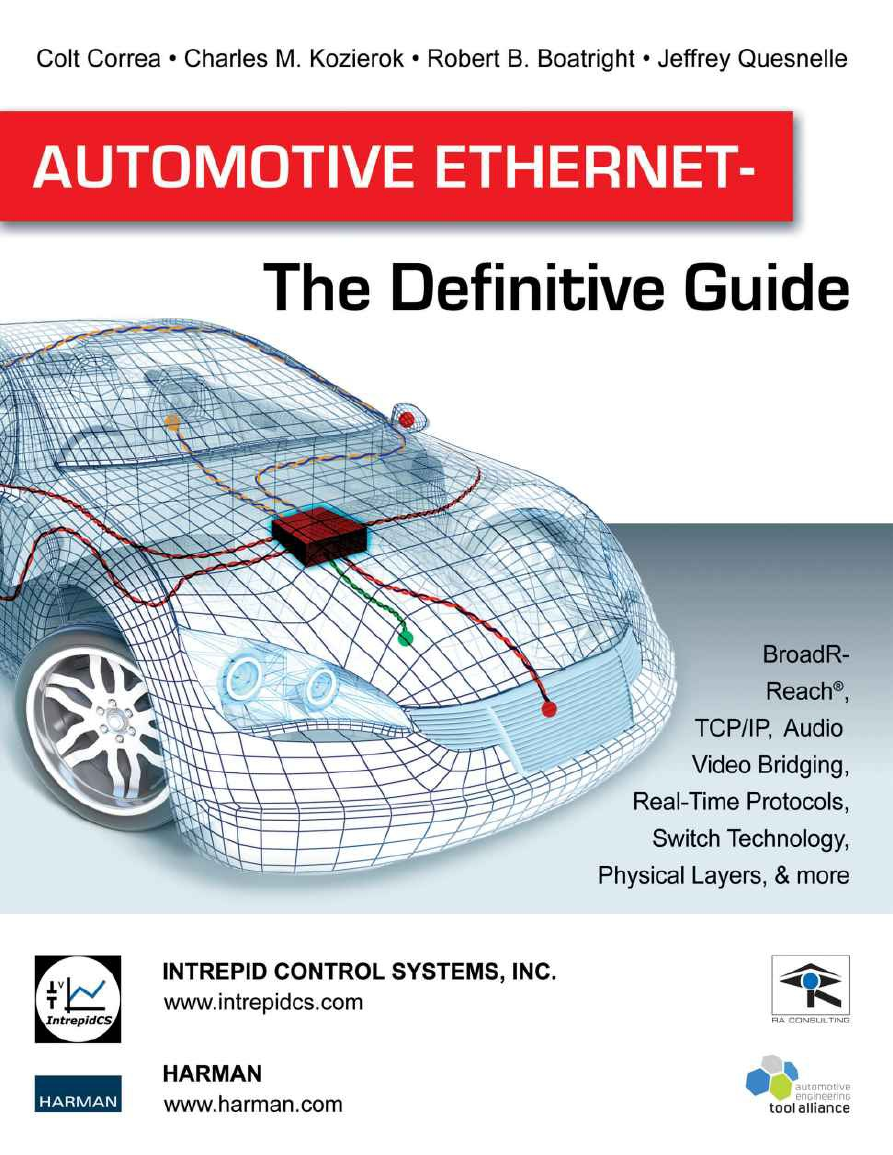
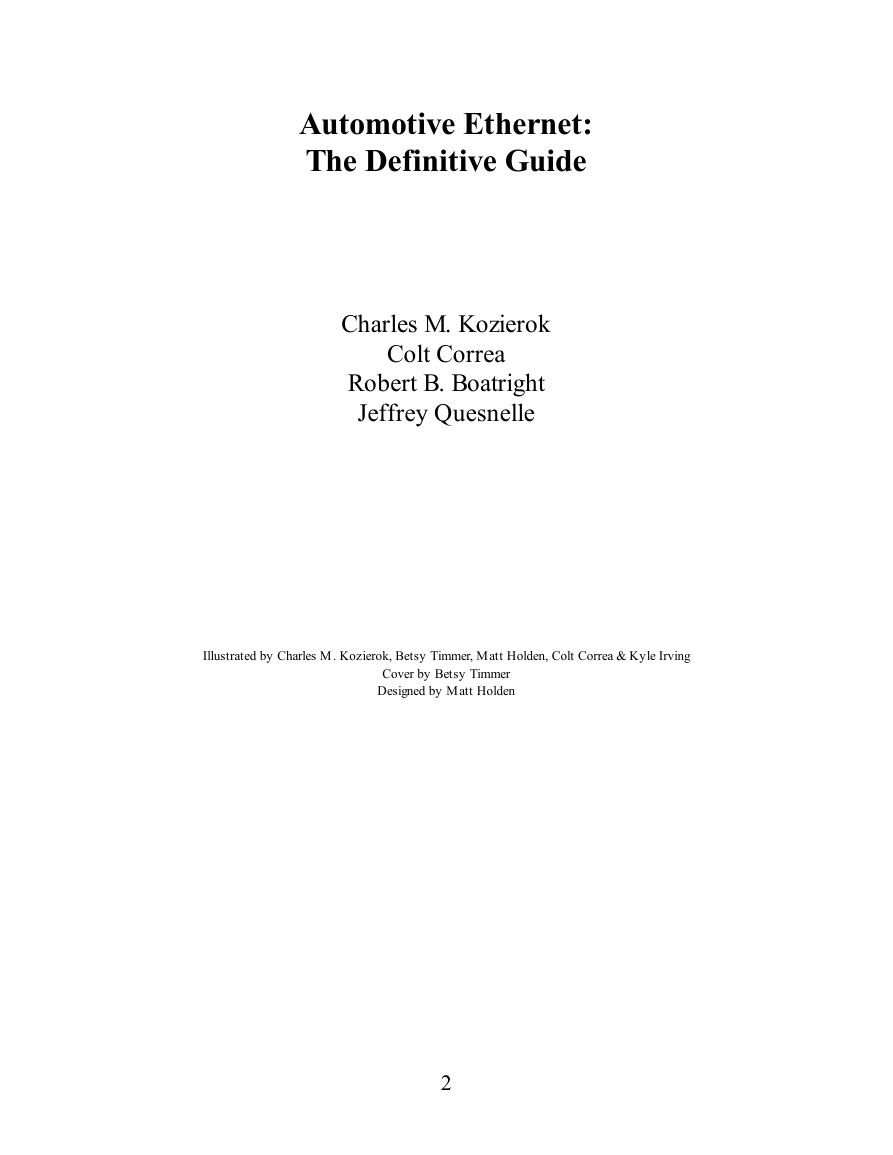
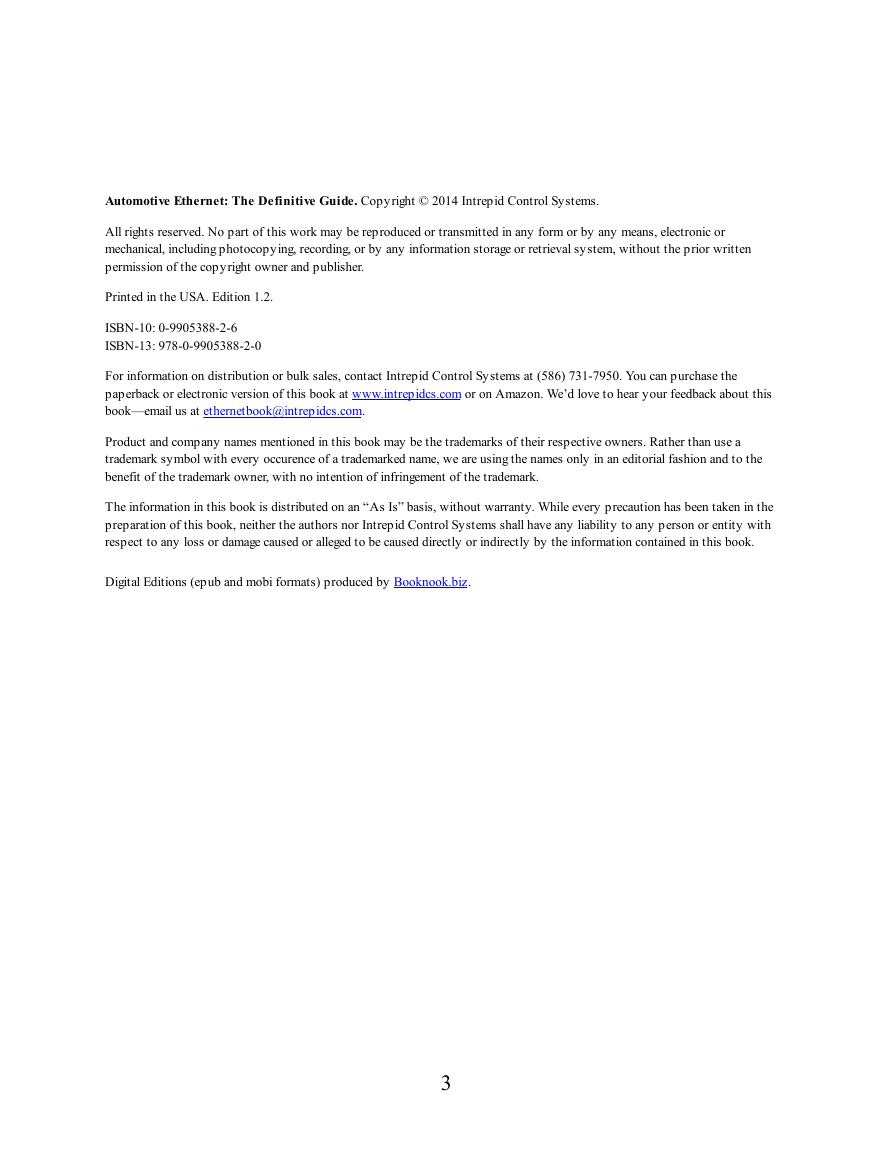
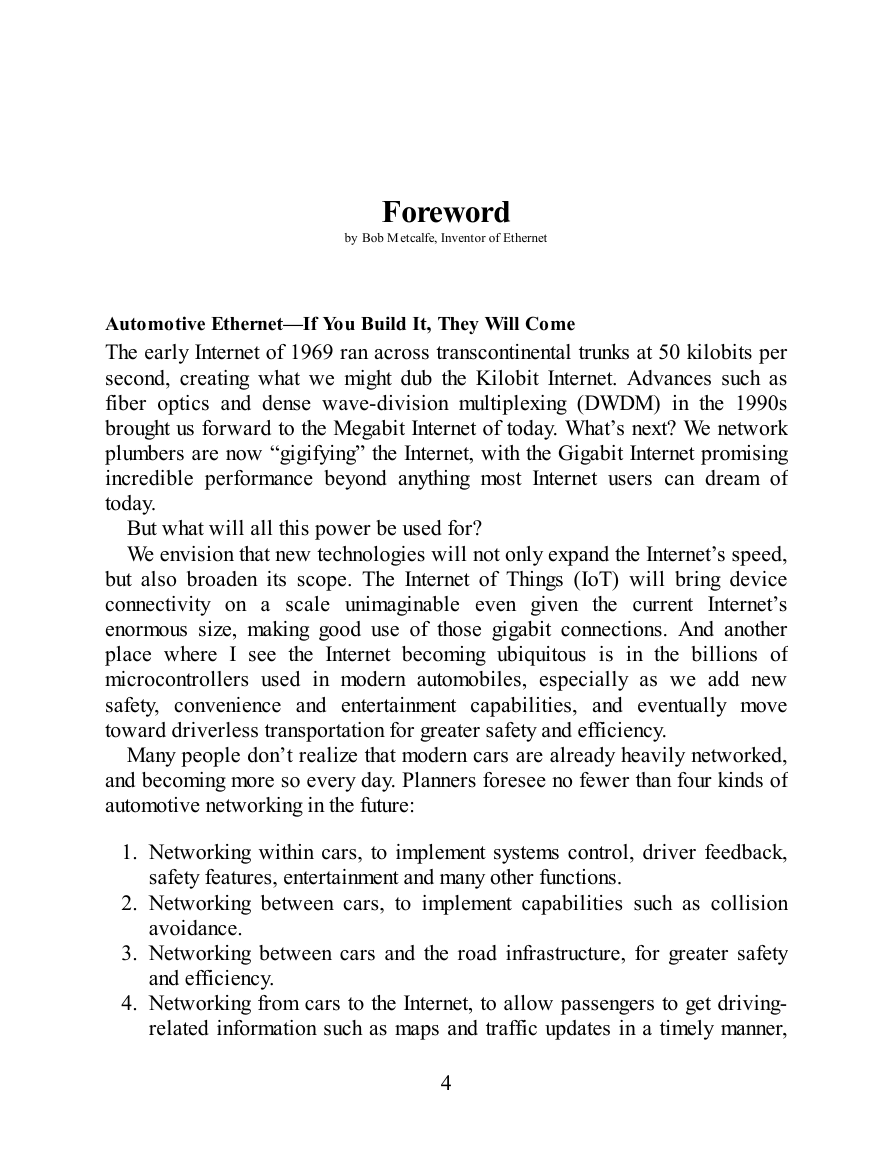

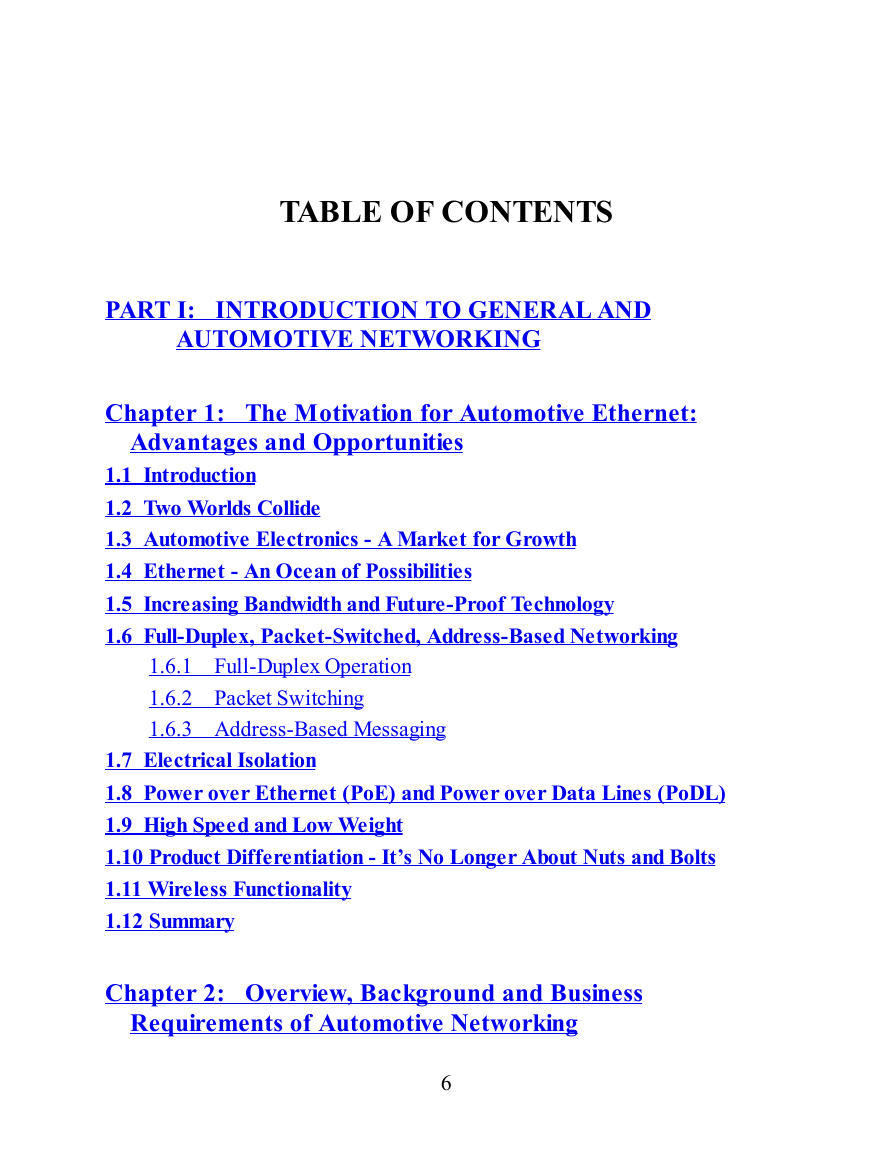

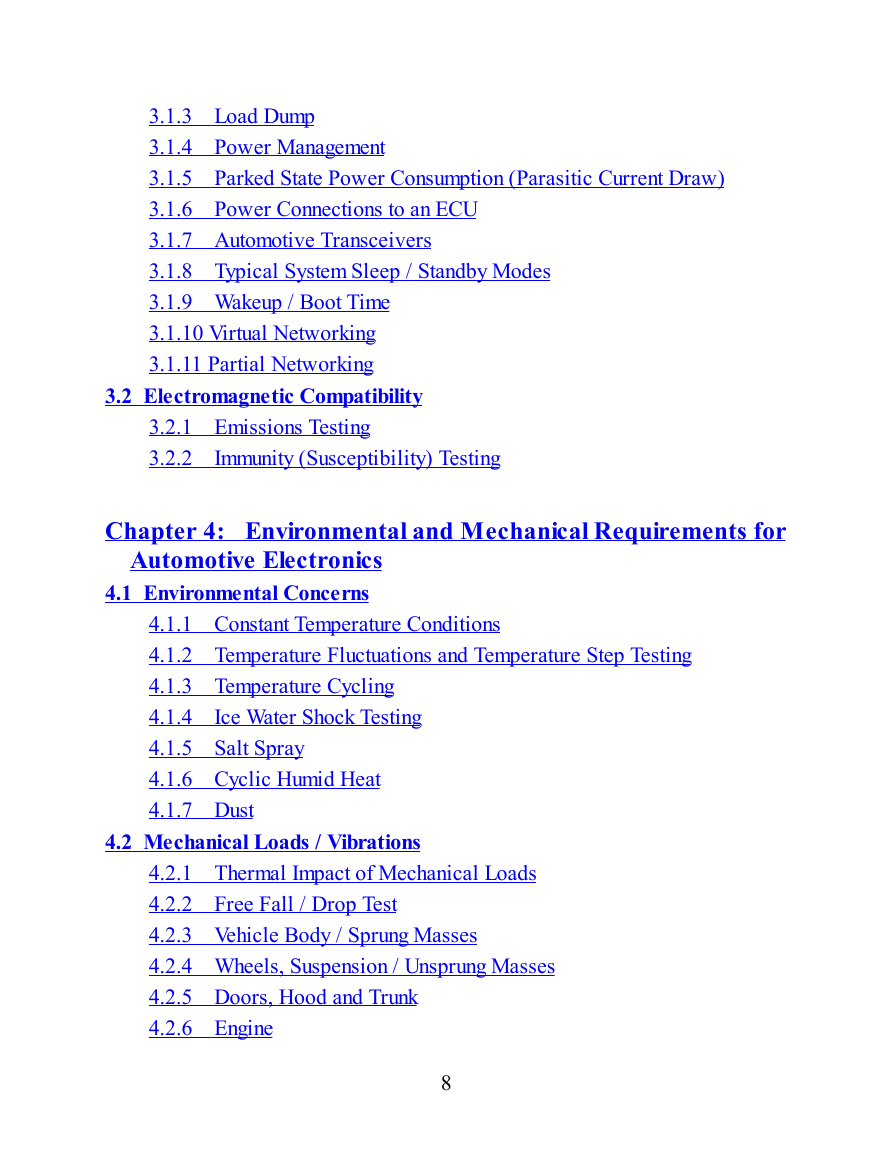








 2023年江西萍乡中考道德与法治真题及答案.doc
2023年江西萍乡中考道德与法治真题及答案.doc 2012年重庆南川中考生物真题及答案.doc
2012年重庆南川中考生物真题及答案.doc 2013年江西师范大学地理学综合及文艺理论基础考研真题.doc
2013年江西师范大学地理学综合及文艺理论基础考研真题.doc 2020年四川甘孜小升初语文真题及答案I卷.doc
2020年四川甘孜小升初语文真题及答案I卷.doc 2020年注册岩土工程师专业基础考试真题及答案.doc
2020年注册岩土工程师专业基础考试真题及答案.doc 2023-2024学年福建省厦门市九年级上学期数学月考试题及答案.doc
2023-2024学年福建省厦门市九年级上学期数学月考试题及答案.doc 2021-2022学年辽宁省沈阳市大东区九年级上学期语文期末试题及答案.doc
2021-2022学年辽宁省沈阳市大东区九年级上学期语文期末试题及答案.doc 2022-2023学年北京东城区初三第一学期物理期末试卷及答案.doc
2022-2023学年北京东城区初三第一学期物理期末试卷及答案.doc 2018上半年江西教师资格初中地理学科知识与教学能力真题及答案.doc
2018上半年江西教师资格初中地理学科知识与教学能力真题及答案.doc 2012年河北国家公务员申论考试真题及答案-省级.doc
2012年河北国家公务员申论考试真题及答案-省级.doc 2020-2021学年江苏省扬州市江都区邵樊片九年级上学期数学第一次质量检测试题及答案.doc
2020-2021学年江苏省扬州市江都区邵樊片九年级上学期数学第一次质量检测试题及答案.doc 2022下半年黑龙江教师资格证中学综合素质真题及答案.doc
2022下半年黑龙江教师资格证中学综合素质真题及答案.doc